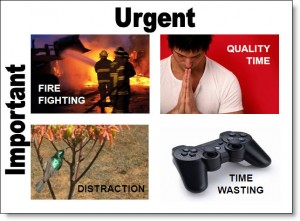A couple of months later, the Dare Conference still swirls into my head at least once per day. Great experiences are like that — they don’t just affect you on the particular day, but for months and years afterwards. Kathy Sierra recently wrote a brilliant piece about how great talks are a user experience (and so the speaker is really just the UI).
Dare Conf was one hell of a user experience.
I still can’t really articulate everything I learnt. Everything I heard. Everything we experienced as a group. Dare felt like early SxSWi. Like you were connecting with people who just got it. Who were simultaneously so different and so like you. Who were taking the time to learn some pretty hard shit, together as colleagues rather than as combatants. Who were deliberately opening themselves up to the scary change, the frightening ideas, the things that might just change the world.
[I appreciate that if you went to much more recent SxSWi you are probably wondering what I’m smoking: read this excellent post by Anil Dash on the web we lost.]
I know I’m doing things differently. Whether it’s realising when my amygdala is hijacking me, remembering to “get in the car” as my friend Neil exhorted, or using Dave Gray’s culture map to illustrate to an organisation why the delta between what they SAY they believe in and what they ACTUALLY believe in is hurting them.
The thing I most want to share with you today about Dare though, is one of the slides from Karen McGrane‘s excellent opening keynote:
Karen was highlighting that in our industry we have (and highly prize) technical skills, but to be really effective we need the others too — we need to be able to work with others (External skills, as she puts it), and we have to have to be able to work with ourselves (Internal skills).
I’ve been managing people for a number of years now. I repeatedly see this play out: someone who is technically brilliant slowly becomes incredibly frustrated that they don’t have the impact they want to have. If they’re lucky, someone helps them to realise that they need to not only be clever and technically brilliant, but they also need to have the soft skills (External) to get other people involved and they need the self-compassion (Internal) to manage their internal frustration at this not being as easy as the stuff they’re already good at.
The only difference between those who managed to develop those skills and those who don’t? Belief in the Soft Skills Fairy.
The Soft Skills Fairy has a wand, and if you were touched with it at birth then you have soft skills. If you weren’t you don’t and can never develop them.
Sounds silly, right? Seriously though, people seem to believe this. The people who believe that anyone can be taught to code, that design skills can be learnt, honed, developed, these same people believe in the Soft Skills fucking Fairy.
The truth is much harder to face: everyone can develop these skills. But it is hard, it takes work, and no one has a magic wand to wave over you to make it happen overnight.
Do yourself a favour: reject the Soft Skills Fairy. Invest in yourself. Make time for learning some of those soft skills in between the technical skills; they are both essential to being awesome at your job. Find people who are good at this stuff and ask them how they learned. Find ways to practise, outside and inside of work. Find people who will tell you the truth about whether you’re getting better and then ask them.
It’ll be hard. It’ll be worth it.
If you want a ready-made safe environment to learn some of these things, come to Dare Conf Mini in January in London. There’s still a £100 discount if you grab an early bird ticket by Monday 18 November. [UPDATE: You can now get a significant discount by using code MERI at checkout too — thanks to the organisers!]
As you’ll see from the line-up, I’m speaking (and running a full day workshop on Practical People Skills) but honestly, I’m hugely excited about what I’ll learn from the other folks speaking and attending. I imagine Dare Mini is going to be another incredible experience and I’ll walk away doing things differently. Better. And I’ll continue to utterly reject the goddamn Soft Skills Fairy.

